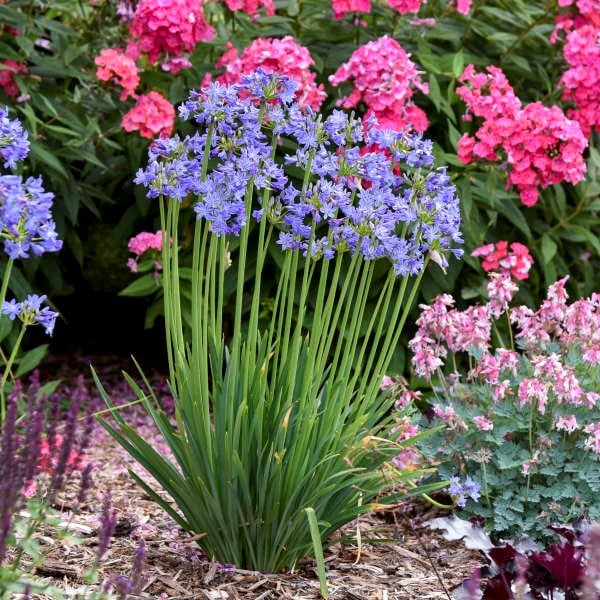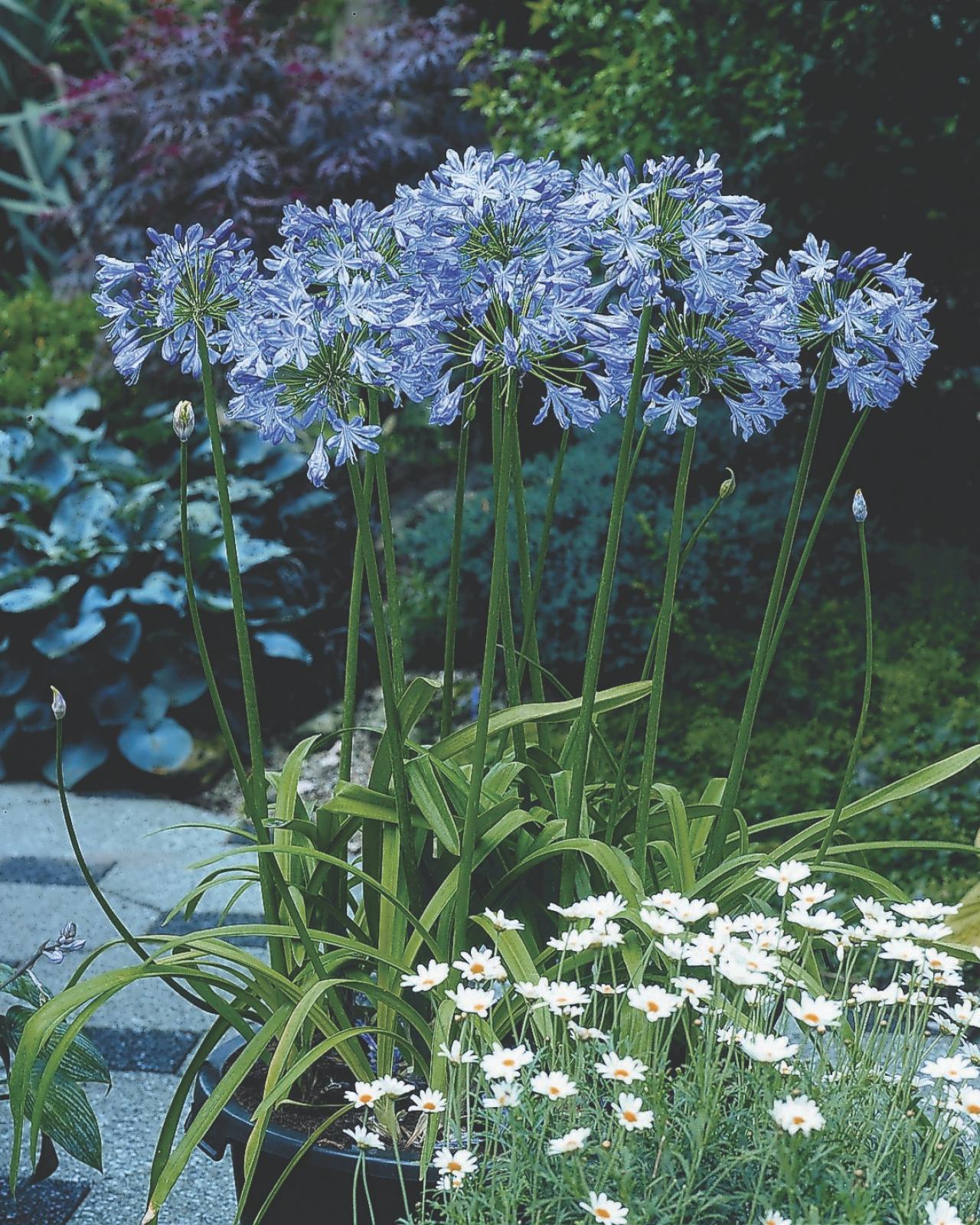Agapanthus Growing Conditions: Soil, Sunlight, and Watering
Agapanthus Growing Conditions: Soil, Sunlight, and Watering
Blog Article
Releasing the Secret to Effective Agapanthus Farming: Tips and Techniques for a Flourishing Garden
In the world of horticulture, cultivating agapanthus successfully requires a critical strategy that encompasses numerous aspects of plant care. With cautious attention to detail, one can open the secrets to supporting these spectacular blossoms, leading to a yard that prospers with elegance and vibrancy. By recognizing the nuances of agapanthus growing, one can produce a setting where these plants prosper and flower abundantly. In the adhering to discussion, we will certainly discover vital ideas and techniques that will certainly lead you towards a prospering agapanthus yard, providing insights into best methods, dirt problems, sprinkling strategies, and much more.
Planting Agapanthus: Finest Practices
When growing Agapanthus, correct soil prep work is essential for ensuring effective development and growth of these stunning blossoms. Agapanthus, commonly recognized as Lily of the Nile or African lily, grows in well-draining soil with a slightly acidic to neutral pH level - Agapanthus. Prior to planting, it is vital to amend hefty clay dirts with raw material such as garden compost or peat moss to boost water drainage and provide vital nutrients for the plants
To plant Agapanthus, select a place that gets full sunlight to partial shade, as this will certainly promote healthy development and bountiful blooming. Dig an opening two times the diameter of the plant's root round and put the Agapanthus at the exact same depth it was previously growing. Delicately backfill the hole with soil, weighing down securely to remove any kind of air pockets around the origins.
Water the freshly planted Agapanthus completely and continue to maintain the dirt evenly wet, particularly throughout the plant's energetic expanding period. Agapanthus. Applying a balanced fertilizer once a month can further support the plant's growth and flowering. By following these finest techniques for planting Agapanthus, you can create a sensational display screen of these exciting flowers in your garden
Suitable Soil Conditions for Agapanthus
For optimum development and blooming success of Agapanthus plants, making sure the soil problems are excellent is critical. Agapanthus likes dirt that is rich in nutrients, so integrating a balanced plant food during the expanding period can promote healthy growth and vivid flowers.

Watering and Feeding Tips
To make certain healthy development and vivid flowers, appropriate watering and feeding strategies are necessary for effective Agapanthus cultivation. Agapanthus plants take advantage of routine watering, particularly throughout the growing season. It is advised to water deeply as soon as a week, making certain the soil is moist yet not waterlogged. Throughout heat or in pots, useful reference even more frequent watering may be necessary to avoid the dirt from drying totally.
When it comes to fertilizing Agapanthus, a balanced fertilizer with equivalent parts nitrogen, phosphorus, and potassium can be used in the spring to advertise healthy and balanced growth and blooming. Slow-release plant foods are optimal for offering nutrients slowly over a prolonged period. Avoid over-fertilizing, as this can lead to extreme foliage development at the expense of flowers.
In addition, incorporating raw material like garden compost right into the soil can enhance nutrient degrees and boost dirt structure, aiding in the overall health of the Agapanthus plants. By complying with these watering and fertilizing tips, garden enthusiasts can ensure their Agapanthus plants thrive and create sensational display screens of blossoms.
Trimming and Deadheading Methods
Proper trimming and deadheading strategies play a vital role in keeping the health and wellness and appearances of Agapanthus plants, matching the necessary techniques of watering and fertilizing for successful growing. Trimming Agapanthus entails getting rid of invested flower heads, yellowing or dead fallen leaves, and overall shaping of the plant to advertise far better development. Deadheading, the procedure of removing faded blossoms, not just improves the plant's look but additionally urges further flowering.
When deadheading Agapanthus, it is suggested to trim off the blossom stem at the base utilizing sharp, clean shears. This procedure redirects the plant's power from seed manufacturing back into origin and foliage development, advertising a healthier and extra durable plant. Regular deadheading can expand the flowering duration of Agapanthus and prevent self-seeding, which can bring about congestion.
In terms of pruning, Agapanthus typically take advantage of a light trim after blooming to clean the plant and urge fresh development. Reducing the invested blossom stems and eliminating any dead or broken vegetation helps keep the plant's vigor and total look. Nonetheless, it is necessary to avoid reducing into the crown of the plant, as this can damage its health.

Protecting Agapanthus From Pests and Diseases
Executing reliable pest and disease management approaches is critical to safeguarding the health and wellness and vigor of Agapanthus plants in growing. One usual bug that impacts Agapanthus is the Agapanthus borer, a caterpillar that passages right into the plant, causing damages to the leaves and flowers.
Along with bugs, Agapanthus are at risk to diseases such as origin rot and fungal leaf spots. These problems can frequently be protected against by ensuring proper drain and preventing overwatering. If indicators of disease show up, influenced components of the plant great post to read must be quickly helpful hints eliminated to avoid more spread. Fungicides may likewise be used as a therapy procedure, complying with the supplier's directions meticulously. By remaining watchful and dealing with bug and condition concerns promptly, garden enthusiasts can help their Agapanthus grow and grow.

Verdict
In final thought, successful farming of agapanthus requires appropriate growing strategies, ideal dirt problems, ample watering and feeding, regular trimming and deadheading, and protection from insects and illness. By complying with these tips and tricks, gardeners can guarantee a flourishing garden filled with gorgeous agapanthus flowers. Agapanthus. Remember to keep constant care and attention to detail to advertise the wellness and longevity of these spectacular plants
When planting Agapanthus, correct dirt preparation is vital for making certain successful growth and development of these gorgeous blossoms.Water the freshly grown Agapanthus extensively and continue to keep the dirt uniformly wet, specifically during the plant's active expanding season.For ideal growth and blooming success of Agapanthus plants, guaranteeing the soil conditions are perfect is important. When planting or hair transplanting Agapanthus, make sure the soil is well-prepared to give the needed foundation for the plants to establish themselves efficiently. One common pest that affects Agapanthus is the Agapanthus borer, a caterpillar that passages right into the plant, creating damage to the leaves and flowers.
Report this page